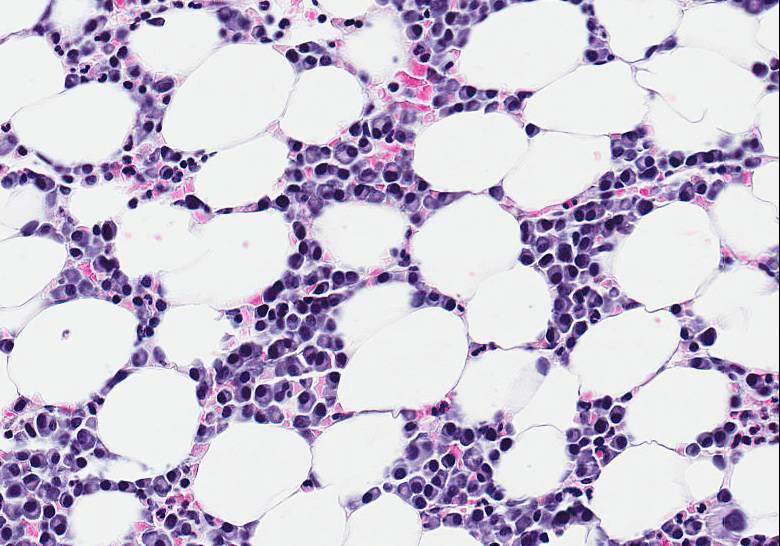
Multiple Myeloma
Multiple myeloma is a blood cancer that develops in the bone marrow, the soft, spongy tissue found in the center of many bones where blood cells are produced. In myeloma, plasma cells, which are normal antibody-producing cells, transform into cancerous myeloma cells.
Myeloma cells produce large quantities of abnormal antibodies (or immunoglobulins) called monoclonal (M) proteins, as well as incomplete parts of antibodies (called light chains or Bence-Jones proteins). These cancer cells crowd out and inhibit the production of normal blood cells and antibodies in the bone marrow.
Multiple myeloma is the second most common blood cancer in the world with approximately 30,000+ new cases diagnosed in the U.S. each year. As there is currently no cure for this disease, patients will typically progress following currently available treatments. There are approximately 120,000 Americans currently living with multiple myeloma and this number is expected to rise with advances in treatment.
Signs and Symptoms of Multiple Myeloma
Multiple myeloma is a debilitating disease with many different signs and symptoms.
These symptoms and complications can include:
- Low blood counts
- Bone loss / bone pain
- Infections
- Kidney impairment
- Anemia and fatigue
- Weight loss
Treatment for Multiple Myeloma
There are a number of therapies currently available to treat patients with multiple myeloma. However, despite continued advances, multiple myeloma remains an incurable disease which is why additional research and development of new therapies remains so important.
Karyopharm’s Focus in Multiple Myeloma
At Karyopharm, much of our clinical development is focused on treating patients with relapsed or refractory multiple myeloma and our investigational drugs are being studied when used in combination with low dose steroids, as well as in combination with other commonly prescribed myeloma drugs such as immunomodulatory drugs, proteasome inhibitors, and monoclonal antibodies.
Learn more about Karyopharm’s clinical program in multiple myeloma
Additional Multiple Myeloma Resources
To learn more about multiple myeloma, below are additional organizations that can provide helpful resources and support:
The Multiple Myeloma Research Foundation
International Myeloma Foundation
HealthTree for Multiple Myeloma
Leukemia & Lymphoma Society
American Cancer Society
CancerCare
NOTE: These links are provided as a convenience, and by including these links, we do not imply endorsement of the content of the external site. The content of these sites is managed by their owners and we have no control nor do we assume responsibility or liability for this third-party content.
